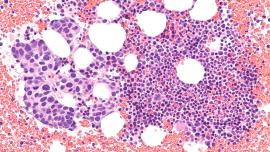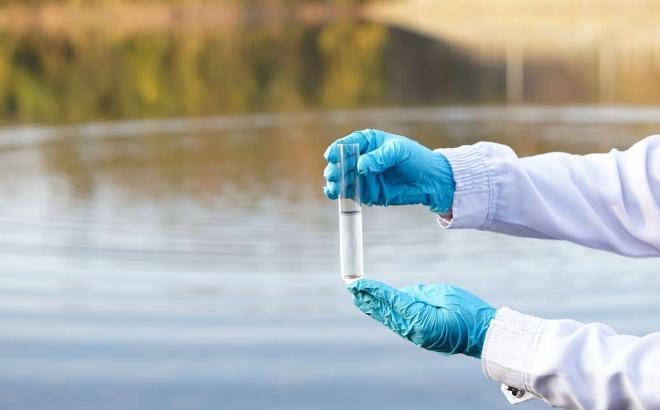Bone Metastasis: Searching for Biomarkers and Therapeutic Agents Against Breast Cancer
Researchers from the Karl Landsteiner University aim to develop a novel model of bone metastatic disease in breast cancer. A new project just launched aims at gaining insights into the development of bone metastases in breast cancer patients and identifying biomarkers as well as new treatment strategies.

A key step of the project is the culture of a bone-like scaffold in a rotating bioreactor, to create lifelike replicas of the bone microenvironment. Close cooperation between KL Krems, Krems University Hospital and other research institutions on Campus Krems will promote networking and support an interdisciplinary approach within the project.
Almost 15% of breast cancer patients suffer from bone metastasis – some of them as late as 25 years after diagnosis. Nine out of ten patients with bone metastases do not survive longer than five years. These dramatic figures underline the urgent need to identify new methods for diagnosing patients at risk of bone metastases and preventing their development. Karl Landsteiner University of Health Sciences (KL Krems) has now launched a project, funded by NÖ Forschungs- und Bildungsges.m.b.H. (NFB), which is designed to do just that – using innovative methods such as a 3D model cultured in a rotating bioreactor.
Bone Cancer“Bone is a highly complex organ,” says project leader Sonia Vallet, a consultant at the Department of Internal Medicine 2 at Krems University Hospital and senior scientist in the Molecular Oncology/Hematology working group at KL Krems. “We want to gain a better understanding of what directs tumor cells to invade the bone.” Dr Vallet and her team will be focusing on what is known as the endosteal niche. This part of the bone contains large amounts of cells called osteoblasts, which are responsible for bone mineralization. Dr Vallet’s previous work showed that, in their early developmental stages, osteoblasts are involved in the formation of bone metastases. However, the mechanisms behind still need to be elucidated.
The first step of the project consists of the development of a 3D model of the endosteal niche using a rotating bioreactor, and will be performed in close collaboration with IMC University of Applied Sciences Krems. “The bioreactor will enable us to create an in vitro model of the endosteal niche,” explains Dr Vallet. “This 3D model will be studied by means of biochemical and molecular-biological analysis, and by KL Krems’ Biomechanics Lab who will be using ultra-high-definition micro-computed tomography.”
Data Generated by ModelOnce the model has been established, the team will begin gathering valuable information about the development of bone metastasis in breast cancer, by investigating how osteoblasts support invasion and growth of breast cancer cells, as well as their drug resistance. In addition, the researchers aim at identifying biomarkers associated with these processes, which could possibly be suitable for use as diagnostic tools. “Then, we will test conventional bone-targeted agents and others that are currently in the trial phase to find out whether and how they influence the various stages of bone metastasis development,” Dr Vallet comments, referring to the third aim of the project.
As part of this translational oncology project, which has been granted a 3-year funding by Lower Austrian government agency NÖ Forschungs- und Bildungsges.m.b.H. (NFB), KL Krems will create links between high-quality basic research, patient care at the University Hospital and the life science expertise available in Krems. This interdisciplinary approach aims at developing more effective and personalized treatment in the increasingly complex field of oncology.




